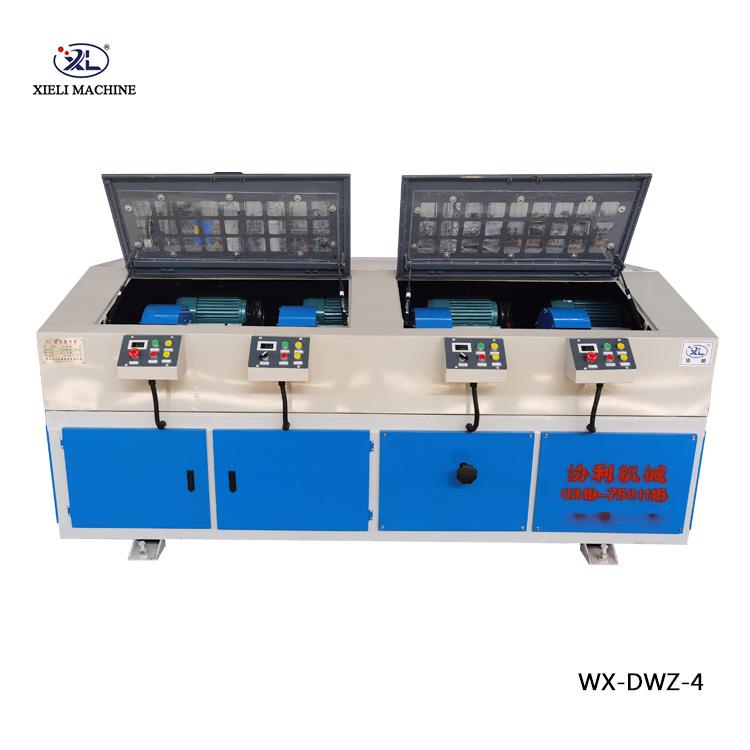The Art and Science of Stainless Steel Pipe Polishing
Stainless steel, renowned for its remarkable corrosion resistance, strength, and aesthetic appeal, is a material of choice for various industries, from automotive to construction. However, the allure of stainless steel is often complemented by a well-executed polishing process, which enhances its visual appearance and functional characteristics. Among the tools and methods used in this realm, the stainless steel pipe polisher stands out as an integral device catering to both industrial and aesthetic needs.
Understanding Stainless Steel Pipe Polishing
Polishing stainless steel pipes involves removing surface imperfections and enhancing the surface finish through abrasion, chemical treatments, or electrochemical methods. The intended purpose of polishing varies, with some applications focusing on aesthetic enhancement, while others prioritize hygiene standards, particularly in food, pharmaceutical, and chemical industries.
The Importance of Polishing
1. Aesthetic Appeal One of the most significant benefits of polishing stainless steel pipes is the visual enhancement that comes with a smooth and reflective surface. Polished stainless steel is often used in visible applications, such as railings, furniture, and architectural elements, where aesthetics play a crucial role.
2. Preventing Corrosion While stainless steel has inherent corrosion-resistant properties, a polished surface can further reduce the risk of corrosion by eliminating microscopic valleys and crevices where moisture and contaminants can accumulate. By providing a smoother surface, polishing helps to maintain the integrity of the material over time.
3. Enhanced Cleanliness In industries where hygiene is paramount, such as food processing and pharmaceuticals, a polished surface is essential. Smooth surfaces are easier to clean and sanitize, preventing the accumulation of bacteria and other harmful substances.
4. Improved Performance In certain industrial applications, polishing can also enhance the functionality of stainless steel pipes. A smooth finish can reduce friction and improve flow characteristics in piping systems, leading to more efficient operations.
Methods of Polishing Stainless Steel Pipes
Various methods can be used to polish stainless steel pipes, each offering unique benefits and considerations
stainless steel pipe polisher

1. Mechanical Polishing This method involves the use of abrasives, such as polishing wheels or discs, to mechanically grind and polish the surface. It is effective for achieving a high shine and is commonly used for larger pipes in industrial settings.
2. Electropolishing This electrochemical process removes a thin layer of material from the surface, effectively smoothing the pipe and improving its corrosion resistance. Electropolishing is particularly beneficial for small-diameter pipes and
- Provides a bright finish - Enhances corrosion resistance - Reduces friction
3. Chemical Polishing Utilizing specific chemical solutions, this method can achieve a polished finish without the heat generation associated with mechanical methods. Chemical polishing is often employed for intricate shapes or delicate components that could be damaged by abrasive processes.
Selecting the Right Stainless Steel Pipe Polisher
When selecting a stainless steel pipe polisher, various factors must be considered to ensure optimal results
- Pipe Size and Shape Different polishers are suitable for different pipe diameters and configurations. Identifying the specific requirements of the pipes being polished will guide the selection process.
- Finish Requirement Depending on the intended use, whether industrial or decorative, the desired finish can vary. Understanding the required level of polish is vital for choosing the right tools and methods.
- Efficiency and Safety The ease of use, efficiency, and safety features of the polisher should also be evaluated. Invest in quality equipment that ensures operator safety and delivers consistent results.
Conclusion
The process of stainless steel pipe polishing is not just about aesthetics; it encompasses functionality, performance, and hygiene. Whether in industrial applications or decorative installations, the right polishing technique can elevate the quality and longevity of stainless steel products. As industries continue to evolve, so too will the methods and technologies employed in the polishing of stainless steel, ensuring that this versatile material remains at the forefront of modern engineering and design.





